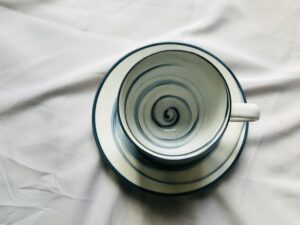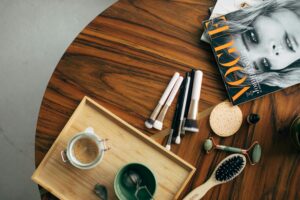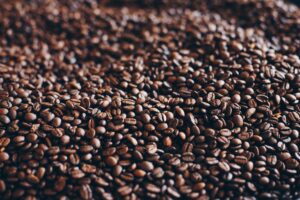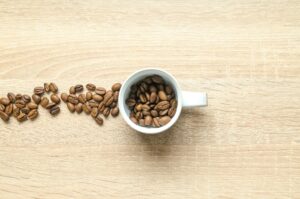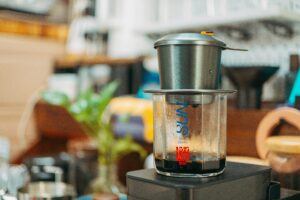In today’s fast-paced world, coffee isn’t just a beverage—it’s a ritual, a comfort, and a passion for many. The aroma, the warmth, the rich flavor—these elements transform a simple cup into an experience. If you’ve ever marveled at your local barista’s ability to craft the perfect cappuccino or velvety latte, you might be surprised to know that you can replicate that same experience at home. With the right tools, techniques, and a bit of practice, creating barista-level coffee drinks at home is not just possible—it’s incredibly rewarding.
Table of Contents
Whether you’re a casual coffee drinker or a dedicated aficionado, this guide will help you unlock the secrets of professional coffee making right from your own kitchen.
Start with Quality Coffee Beans
The foundation of any good coffee drink starts with the beans. Many people underestimate how much of a difference fresh, high-quality beans can make. Baristas use freshly roasted beans, often within two weeks of roasting, to ensure flavor and aroma are at their peak.
If you’re making coffee at home, avoid pre-ground coffee that sits on the shelf for months. Instead, buy whole beans from a local roaster or a trusted online source. Look for single-origin beans or carefully blended varieties depending on your taste preferences—whether fruity, nutty, chocolatey, or earthy.
Invest in a good airtight container and store your beans away from light and moisture. Remember: freshness is key.
Grind Your Beans Fresh
Grinding coffee just before brewing is one of the most impactful steps you can take to elevate your coffee game. Different brewing methods require different grind sizes—espresso calls for a fine grind, while French press needs a coarse one. A burr grinder is the preferred tool for achieving consistent grind sizes, which is crucial for flavor extraction.
Inconsistent grinds can lead to either under-extraction (sour and weak) or over-extraction (bitter and harsh). The more uniform your grounds, the more balanced your drink will be.
Choose the Right Brewing Method
Baristas don’t use just one method. From espresso machines to pour-over kits, French presses to AeroPresses, each method extracts flavor differently and suits different coffee styles. At home, you can experiment with these tools depending on what type of coffee you enjoy most.
If you love creamy espresso drinks like lattes and cappuccinos, a semi-automatic or automatic espresso machine is ideal. While they can be an investment, they pay off in the long run and let you replicate your favorite café drinks.
For those who prefer a cleaner, more aromatic cup, a pour-over method using a Chemex or Hario V60 brings out intricate flavors in lighter roasts. French press delivers a full-bodied, rich texture, while AeroPress is compact and versatile, perfect for quick, flavorful brews.
Ultimate Home Coffee Roasting Starter Kit
Master the Espresso Shot
If you’re dreaming of recreating café-style drinks, mastering the espresso shot is non-negotiable. A well-pulled espresso shot should have a rich crema, bold flavor, and balanced acidity. Use freshly ground beans, tamp the grounds evenly with the correct pressure, and ensure your water temperature is around 195°F to 205°F.
Your machine’s pressure should also be optimized—9 bars is considered standard for espresso. Practice your tamping technique and shot timing until you consistently produce a balanced, rich shot.
Learn the Art of Steaming Milk
Milk texture is a signature feature of many barista-crafted drinks. For lattes, you need silky microfoam; for cappuccinos, you want a frothy, airy consistency.
To achieve this, start with cold milk and use a stainless steel steaming pitcher. Submerge the steam wand just below the milk surface, allowing air to be incorporated for a few seconds before plunging deeper to heat. Swirl the milk afterward to achieve a glossy, velvety finish.
Avoid overheating—milk that goes beyond 150°F will start to lose sweetness and texture. Use a thermometer if needed to practice consistency.
Recreate Classic Coffee Drinks at Home
Let’s look at how to create a few classic barista-style drinks:
Latte: Start with one or two shots of espresso. Steam your milk to a smooth microfoam consistency and pour slowly, holding back the foam initially before finishing with a light layer on top.
Cappuccino: Similar to a latte but with more foam. The ratio is typically 1:1:1—one-third espresso, one-third steamed milk, one-third foam.
Flat White: Use ristretto shots (shorter, more concentrated espresso) and velvety milk foam, less than a latte but silkier in texture.
Macchiato: This drink highlights the espresso. Add just a dollop of steamed milk foam on top of a single or double shot.
Mocha: Combine espresso, steamed milk, and rich chocolate syrup. Top with whipped cream for indulgence.
Creating these drinks consistently requires patience, but once you master the basics, the possibilities are endless.
Practice Latte Art
Once you’ve nailed espresso and milk texture, it’s time to explore the world of latte art. While this is often seen as decorative, it’s also an indicator of good milk texture and a well-poured drink.
Start with basic shapes like hearts or tulips. Use a steady hand and pour your steamed milk directly into the center of the espresso, gradually raising and lowering the pitcher to control the flow.
It may take several tries to get it right, but practice is part of the fun. Many baristas spend years perfecting their latte art—and you can too, right in your kitchen.
Invest in the Right Tools
While you can get started with just a basic setup, having the right tools can significantly enhance your results. Consider the following:
- Burr Grinder: For consistent grind size.
- Espresso Machine: For café-quality shots.
- Milk Frother or Steam Wand: For proper milk texture.
- Digital Scale: To measure beans and water accurately.
- Gooseneck Kettle: For precision when pouring during manual brews.
- Thermometer: To monitor milk temperature and avoid overheating.
Quality equipment doesn’t have to break the bank, but choosing the right gear sets you up for success.
Create a Coffee Routine
To truly become a home barista, develop a coffee routine that you enjoy. This might mean setting time aside each morning to brew a pour-over, or hosting friends on weekends with cappuccinos and mochas. Document your process, tweak variables like grind size, water temperature, or milk brand, and find what produces the best results for your taste.
Keeping a coffee journal is another great way to track your progress and flavor preferences.
Experiment with Flavors and Syrups
Baristas often add flavor syrups, spices, or alternative milks to cater to individual tastes. At home, you can do the same. Try syrups like vanilla, caramel, hazelnut, or even seasonal flavors like pumpkin spice or peppermint.
Spices such as cinnamon, nutmeg, or cardamom can add complexity. You can even make your own syrups by simmering sugar with water and flavor extracts.
Non-dairy milks such as oat, almond, or soy have their own textures and flavors, so experiment to find the best match for your favorite drinks.
Practice Makes Perfect
Even professional baristas didn’t learn it all in one day. Making barista-level drinks at home is a journey. Don’t be discouraged if your early attempts fall short. With each cup, you’re learning what works, what needs improvement, and how to refine your technique.
Over time, your skills will grow, and you’ll not only save money but gain immense satisfaction from creating coffee drinks that rival your favorite café’s offerings.
FAQs: Barista-Level Coffee at Home
Q: Do I need an expensive espresso machine to make good coffee at home?
A: Not necessarily. While a high-end machine offers more control, there are budget-friendly options and alternative brewing methods like AeroPress or Moka Pot that still produce rich, strong coffee.
Q: How do I know if my coffee is under-extracted or over-extracted?
A: Under-extracted coffee often tastes sour or weak, while over-extracted coffee tastes bitter or harsh. Adjust grind size, water temperature, or brew time to find balance.
Q: What’s the best milk for frothing?
A: Whole milk creates the creamiest foam, but barista-grade oat milk is a great non-dairy alternative that froths well and adds a naturally sweet taste.
Q: How long should I steam milk?
A: Steam until the milk reaches about 140°F to 150°F and has a velvety texture. Overheating can cause it to lose sweetness and develop a burnt flavor.
Q: Can I make iced coffee or cold brew like a barista?
A: Absolutely. Brew strong coffee or espresso, cool it down, and pour over ice. Cold brew requires steeping coarse grounds in cold water for 12–24 hours, yielding a smooth, low-acid drink.
Final Thoughts
Creating barista-level coffee drinks at home is more than just saving money—it’s about embracing the art of coffee. With quality beans, a few essential tools, and a willingness to practice, your kitchen can become your favorite coffee shop. From the satisfying hiss of steaming milk to the comforting sip of a perfectly made latte, the joy of making your own café-quality drinks is unmatched.
So clear some counter space, grab your favorite mug, and get brewing—your home barista journey starts now.


